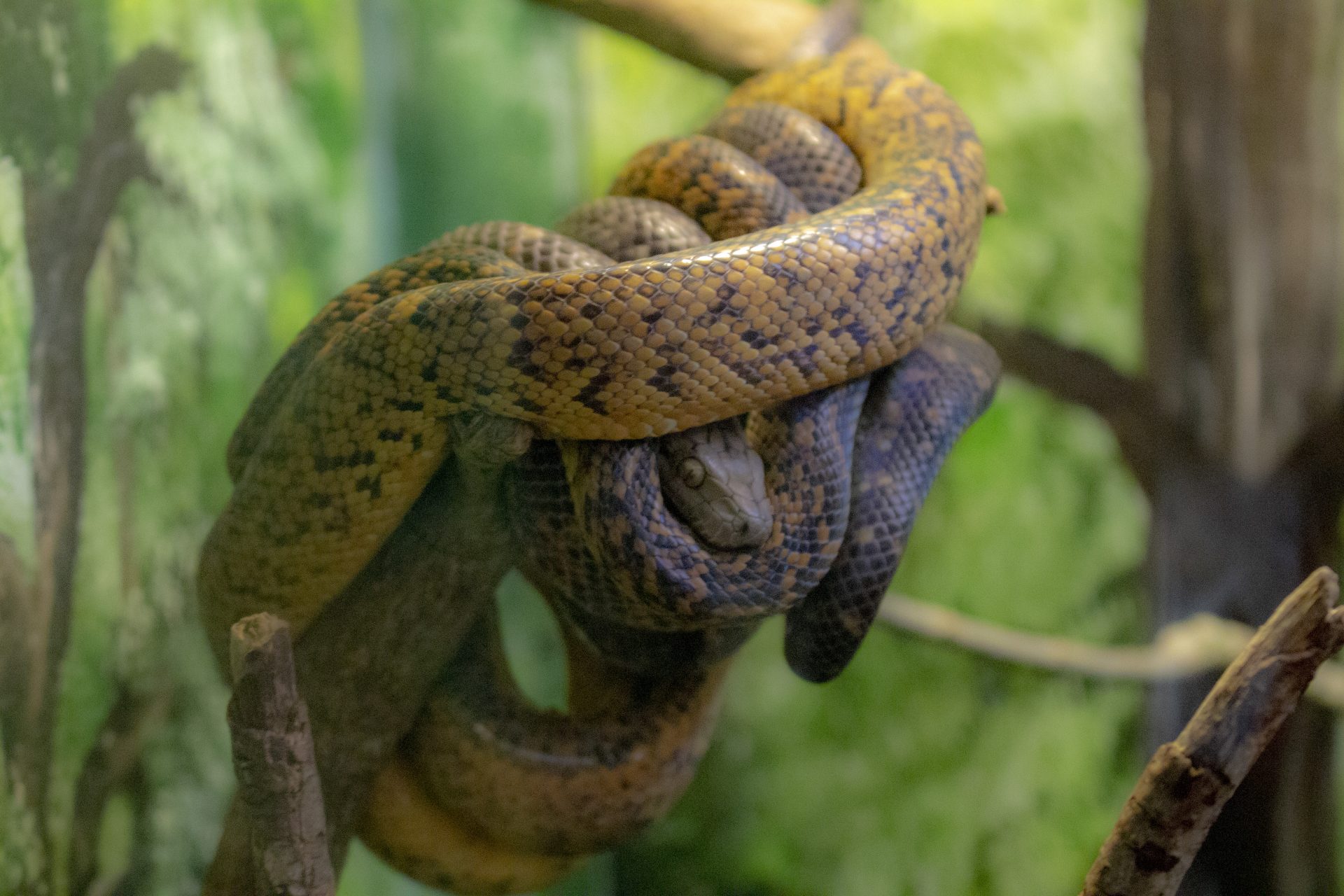
This arboreal reptile is likely to be found in the trees but is well hidden due to its color variation across their scales.
Jamaican boas hunt primarily at night. During the day, they may be found hiding among dense foliage, trees, or rocky burrows. Sometimes they will be seen in the early morning basking on rocks to raise their body temperature.

These snakes have great camouflage, but look closely– you're likely to find them resting in the trees.

Dave
These snakes are endemic to Jamaica but that includes Goat Island on the southwest coast of the mainland.
Jamaica
Forest and woodland habitats
1.5–2.5 meters (5–8 feet)
Rodents, bats, birds
Cats, pigs, dogs and mongoose
Needle-like teeth and strong constriction
Up to 44 eggs per clutch in a whole nest (multiple mothers)
Vulnerable
Up to 30 years in human care
